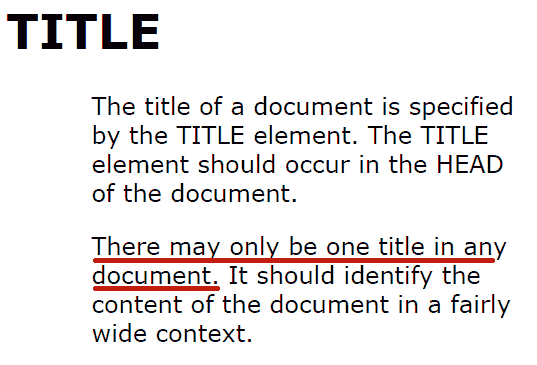17 May Google on How it Handles Extra Meta Descriptions and Title Tags via @martinibuster
A publisher asked Google’s John Mueller if it’s okay to add two meta description tags and two title tags on a single page.
Google’s John Mueller provided a surprising answer that shows how Google handles double HTML elements.
The person asking the question wanted to make a temporary change to the meta and title HTML elements. Then after a certain point the publisher could revert to the original versions.
The publisher said they had to temporarily update some of their content pages due to Covid-19.
The question was about how to handle a temporary change in the meta description and title tags.
This is the question that was asked:
“Concerning the meta description of the page, I got the SEO tip to include a second meta description and title concerning this topic into the header.
Would this really make sense to Google?”
John Mueller answered:
“So, if you’re including a second meta description tag on a page we will treat that the same as if you just extend the existing meta tag on the page.
…there’s no kind of bonus to using a second meta description tag on a page compared to just adjusting your existing one.
With regard to the title, that’s the same thing. It’s not that there’s any kind of a bonus attached to making a second title tag.
Essentially, you might as well just write a clear new title using the existing title tag.”
Google Says it’s Okay to Use Extra Title and Meta Descriptions
According to Google, Google will combine extra title and meta description tags into a single meta description and a single title tag. But just because Google says doing something that is different from normal is okay doesn’t mean you should go out an do it.
How Google will choose to display the double tags is up to Google.
Normally Google will display exactly what is in your title element. Adding two title elements passes that control from the publisher to Google and introduces an element of uncertainty as to how that title will display.
Additionally, while John Mueller says that Google can handle extra title and meta descriptions, he also says that publishers should stick to writing a single meta description and a single title tag per page.
There’s one more concern that was left out and that involves HTML standards.
Related:SEO Best Practices: How to Create Awesome Meta Descriptions
Extra Elements Violates Official HTML Standards
The technical name of the meta description tag is Meta Description Element. An element is like a major building block of an HTML web page (document).
HTML is officially defined by an international group called the World Wide Web Consortium, also known as the W3C. The specifications for HTML are found at W3.org.
Elements are described by the W3C as having a function. Each function has rules.
One of the rules for the meta description element is that there should only be one meta description per page.

 This is a screenshot from the official W3C web page where it defines the proper use of the Meta Description element. The W3C publishes the official HTML standards.
This is a screenshot from the official W3C web page where it defines the proper use of the Meta Description element. The W3C publishes the official HTML standards.Similarly for the title element, there should only be one title element per web page. Adding more than one title element creates invalid HTML.
Valid HTML, or HTML with the least amount of errors, helps ensure that the web document displays to site visitors exactly as you want it to.

 The W3C clearly specifies that there should only be one title element per page. Adding more than one title element creates invalid HTML.
The W3C clearly specifies that there should only be one title element per page. Adding more than one title element creates invalid HTML.Takeaway
Google’s John Mueller’s answer provides a glimpse into Google’s strategy for handling invalid HTML and mistakes. In this case, double elements are treated as a single element.
Additionally, John Mueller advises that while Google can handle two meta descriptions and two title tags, he encourages publishers to adhere to the standard practice of one title element and one meta description per page.
Lastly, by obeying good coding practices, publishers can assure a better user experience and helps assure that search engines will not make mistakes when crawling a web page.
Watch the Google Webmaster Office Hours hangout below:
Related:6 Mistakes to Avoid When Writing Your Meta Descriptions
Sorry, the comment form is closed at this time.